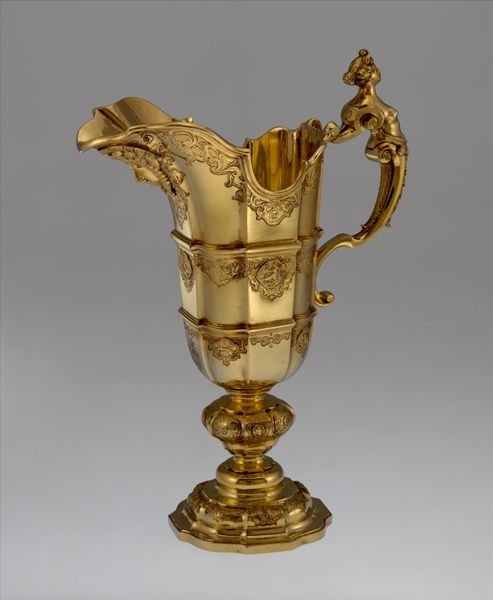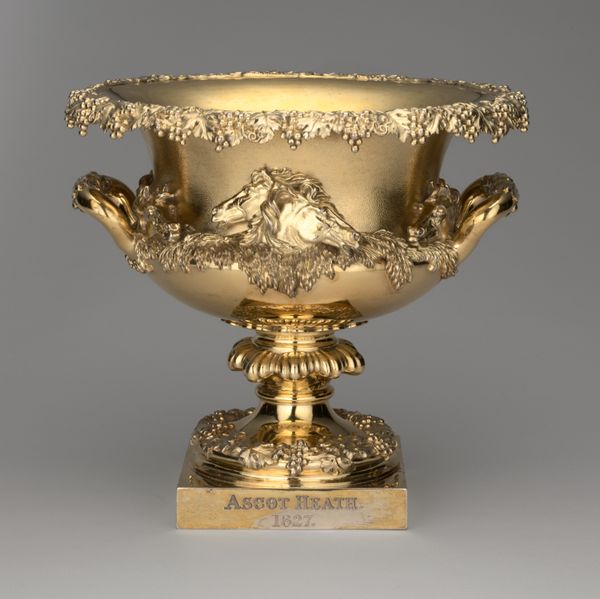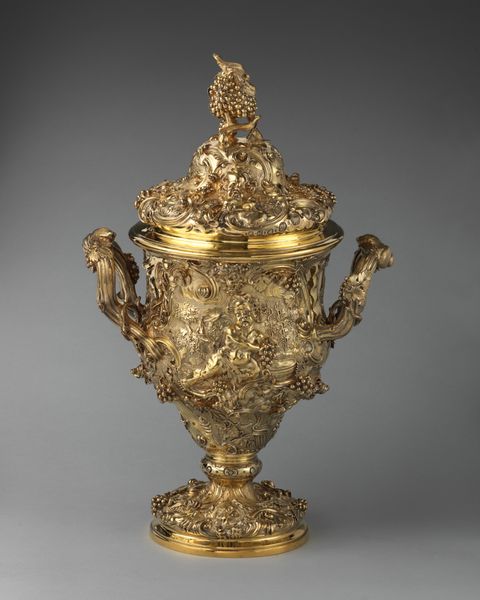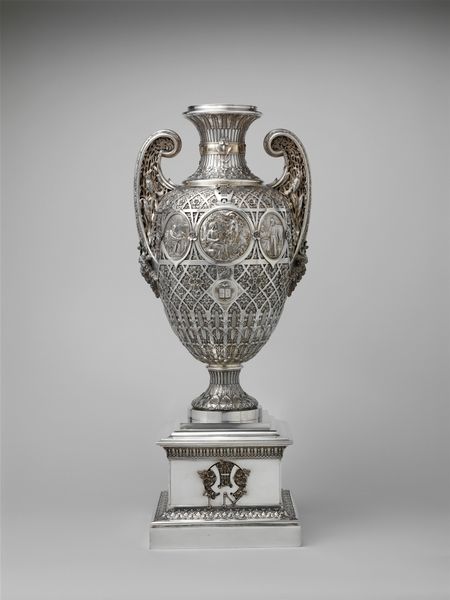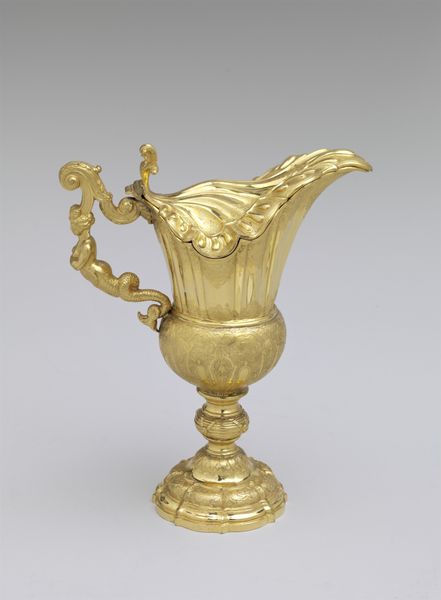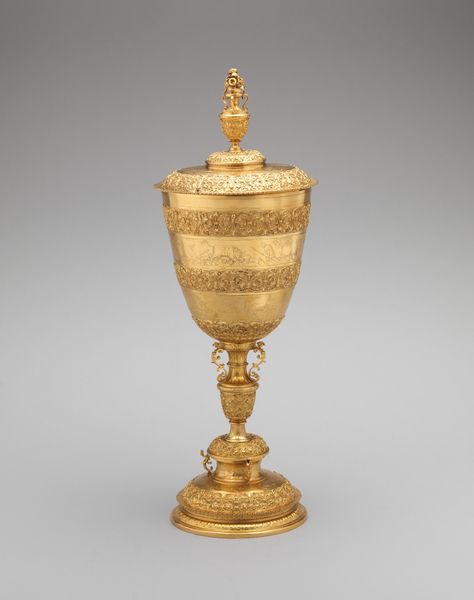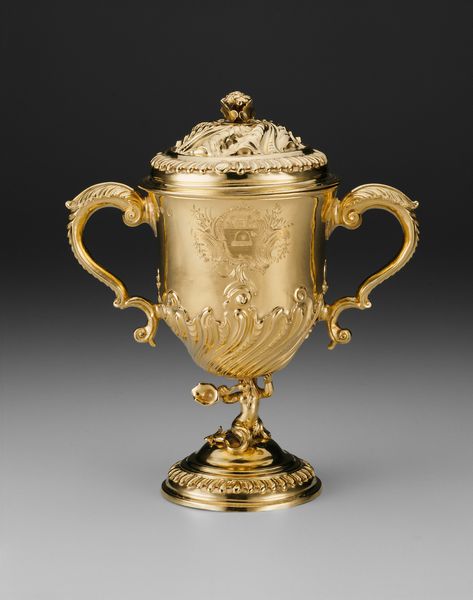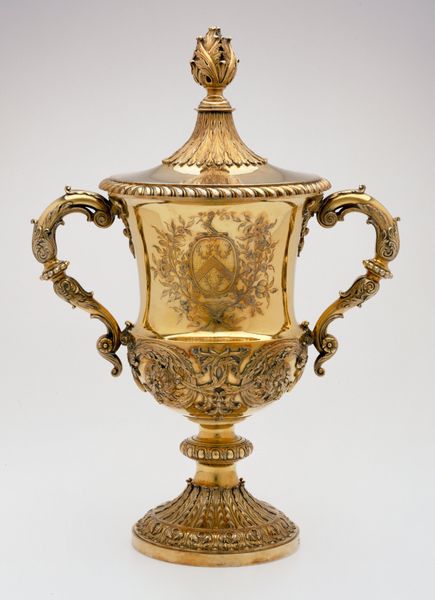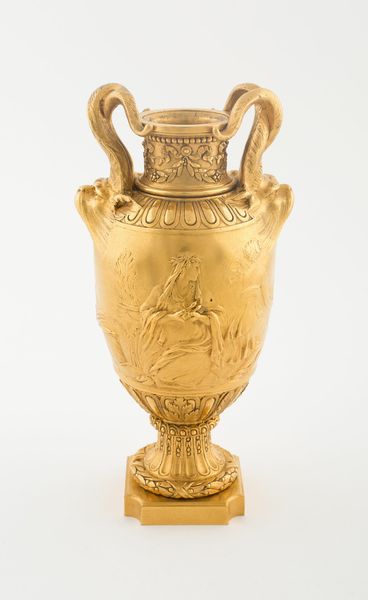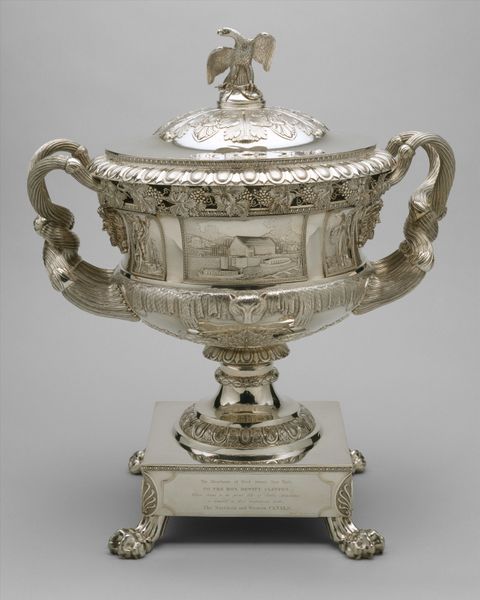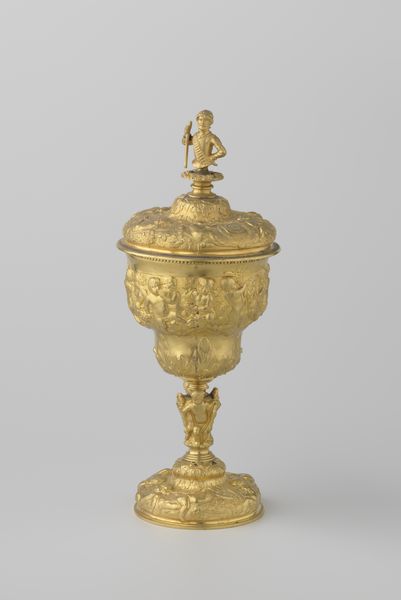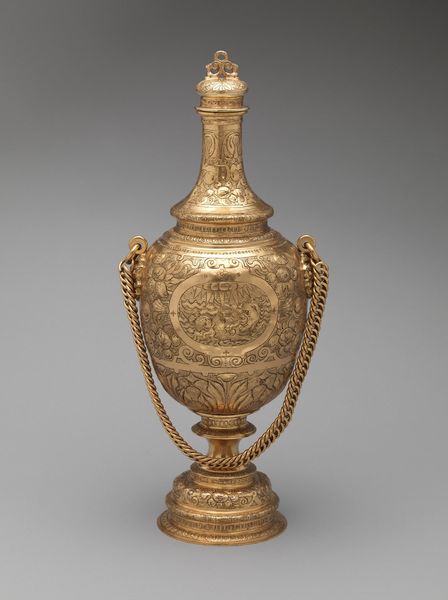
silver-gilt, metal, gold, relief, sculpture
#
portrait
#
neoclacissism
#
silver-gilt
#
metal
#
gold
#
relief
#
vase
#
structure design
#
sculptural image
#
figuration
#
sculpture
Dimensions: 28 1/4 x 14 9/16 x 10 in. (71.76 x 36.99 x 25.4 cm)
Copyright: Public Domain
Curator: I’m immediately struck by the sheer opulence. It practically radiates wealth and power, doesn’t it? Editor: Absolutely. What we are looking at is a "Vase", crafted around 1822 by Rundell, Bridge & Rundell. It’s a magnificent example of Neoclassical artistry rendered in silver-gilt. Its presence here at the Minneapolis Institute of Art allows us to reflect on its layered cultural contexts. Curator: Silver-gilt, a technique as layered as the vase itself! It echoes that old adage, ‘all that glitters is not gold,’ a fitting parallel given the history of colonial exploitation embedded within Neoclassical aspirations of empire, doesn't it? Editor: I see what you’re getting at, especially with the reliefs depicting classical scenes. But let's not overlook the visual vocabulary here. Notice the handles, shaped like serpents. Serpents represent healing and transformation, or even subtle suggestions of eternity, harkening back to antiquity. Then the elephant supports at the base--those suggest strength, wisdom, and a historical connection to commerce and trade, to global power. Curator: Trade certainly. The elephantine figures, indeed allude to that colonial project: Britain’s acquisition and administration of the subcontinent, which has resulted in centuries of complicated social and political legacies. The figures cast on the central frieze adopt those well-worn Neoclassical poses, invoking a certain visual language around virtue and heroism—elements always worth questioning! Who are they meant to inspire, and to what ends? Editor: These images are steeped in classical allegories meant to suggest a kind of elevated morality. It speaks volumes about what was considered virtuous at the time, those standards and social structures. And the intricate botanical elements adorning the vase? It represents abundance and perhaps a deliberate celebration of nature as it connects to social ideals. Curator: A celebration indeed, though one cannot help but notice what narratives were being highlighted through material culture and at what cost for everyone outside that golden sphere of influence! Editor: Exactly. A work of art meant to be beautiful is not absolved of engaging social critiques in a comprehensive consideration of context. Thanks for your perspective. Curator: Thank you. Recognizing those visual cues helps unlock how deeply embedded those aspirations are, which can affect present perceptions.
Comments
minneapolisinstituteofart about 2 years ago
⋮
This presentation vase was made in 1822 for Henry Russell II (1783-1852), the British representative at the court of Hyderabad from 1811-1820, as a gift from the officers of the Russell Brigade, which he had founded and sponsored. Its shape is based upon the Roman imperial Buckingham Vase, which was unearthed in 1769 and engraved by Piranesi in 1778. The Buckingham Vase had an immense influence on the decorative arts of the Neoclassical period, as also evidenced by the four wine coolers, which take inspiration from its shape, in the nearby window case. Rundell, Bridge and Rundell, the foremost silversmiths of their age, collaborated with three of the most celebrated English sculptors of the period to create this masterpiece: Sir Francis Chantrey provided the overall concept, Thomas Stothard modelled the two military reliefs on the vase, and Edward Hodges Baily - famous for the statue of Lord Nelson on top of the column in Trafalgar Square in London - sculpted the elephant heads and the snakes. Departing from the ancient model, Hodges Baily modelled the serpents after actual snakes, achieving an astonishing degree of naturalism. At the same time, he bent their bodies in the most elegant way, and created an entirely abstract chord with the curves of the adjoining handle's branches covered with acanthus foliage.
Join the conversation
Join millions of artists and users on Artera today and experience the ultimate creative platform.
